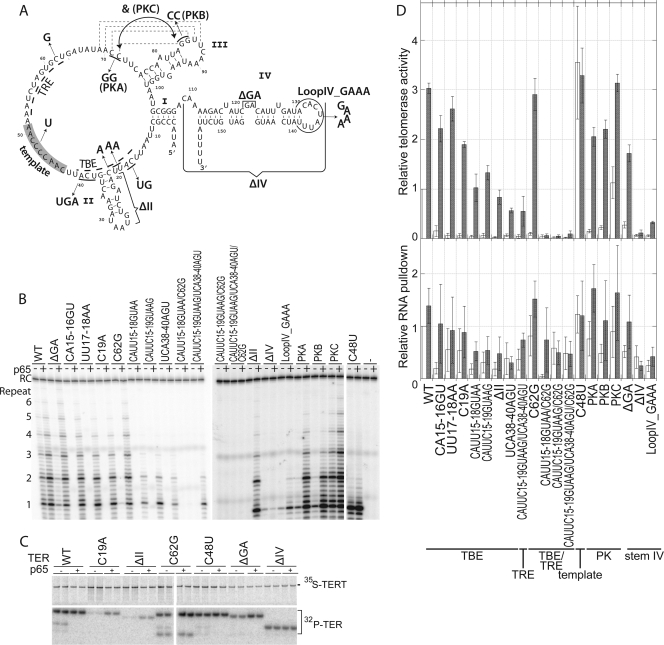FIG. 5.
p65 rescue distinguishes TER assembly mutants from TER activity mutants. (A) Secondary-structure diagram of TER indicating the various mutations tested. (B) Telomerase assays for each of these mutants with equal amounts of 35S-labeled TERT. The activity for each mutant is shown in the absence and presence of p65. RC, recovery control. (C) SDS-PAGE analysis of a selection of telomerases containing the indicated TER mutations assembled in the absence and presence of p65. The samples are shown in duplicate, and the 35S-labeled TERT and coimmunoprecipitation of 32P-labeled mutant TER are indicated. (D) Quantitation of telomerase activity assays and RNA pulldowns. Mutants are listed at the bottom. The top panel shows relative telomerase activity for each mutant in the absence (white bars) and presence (gray bars) of p65. All activities were normalized to the activity of telomerase containing wild-type TER in the absence of p65. The error bars indicate SEM (n ≥ 3). The bottom panel shows the RNA recovered by the coimmunoprecipitation of TERT normalized to the amount of TERT and setting the amount of wild-type TER recovered in the absence of p65 to 1.0. White bars, without p65; gray bars, with p65. The error bars indicate the SEM from three independent measurements.

